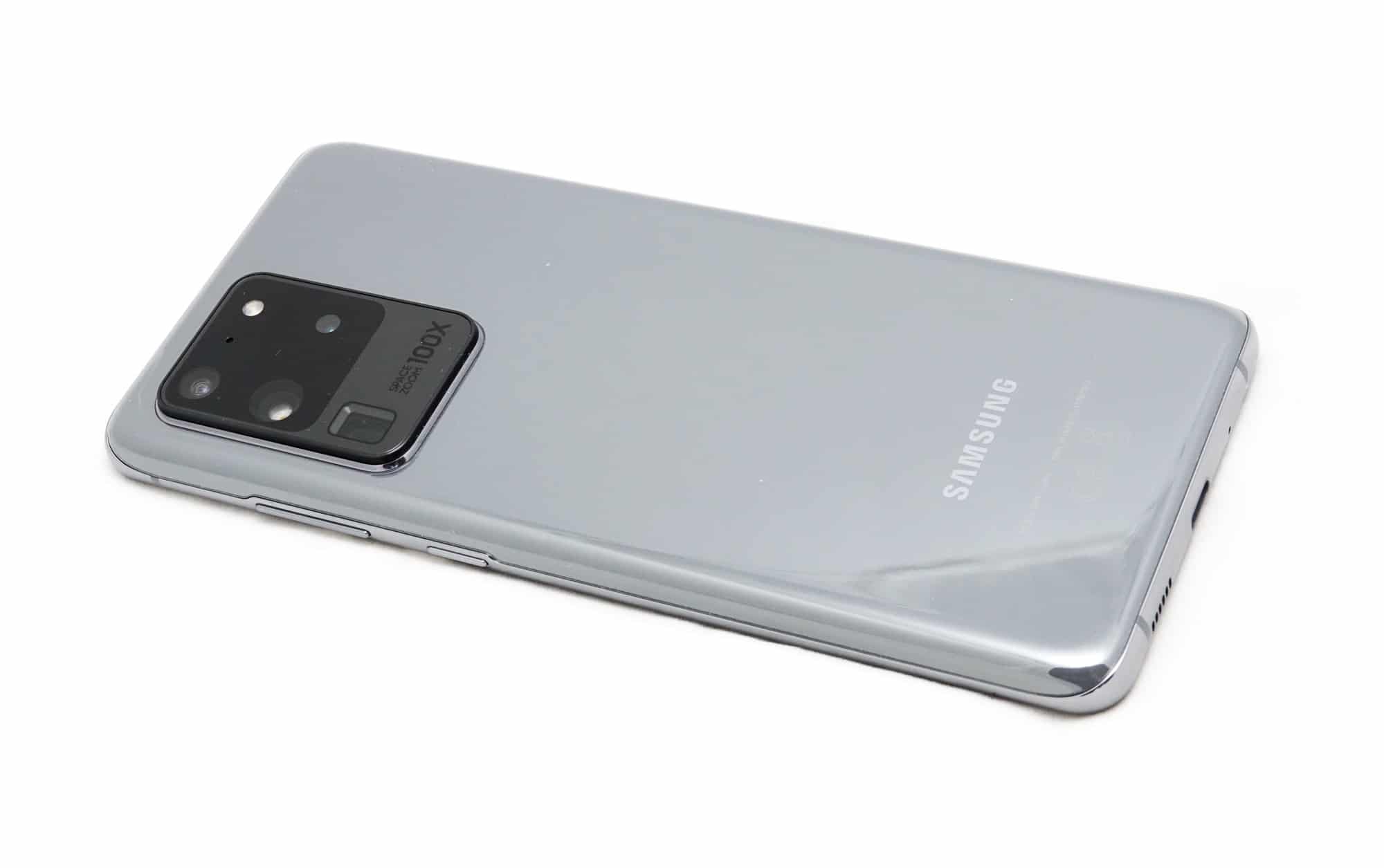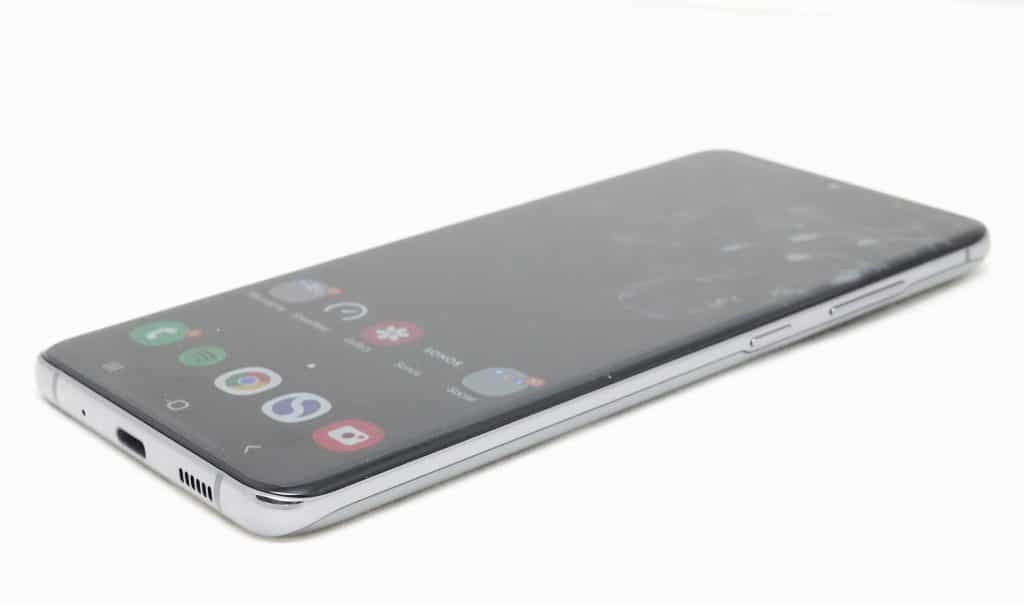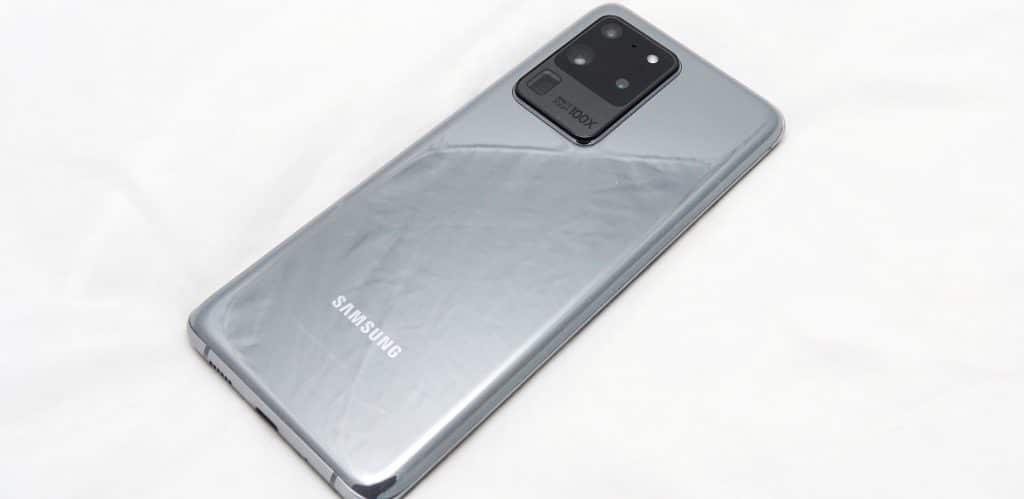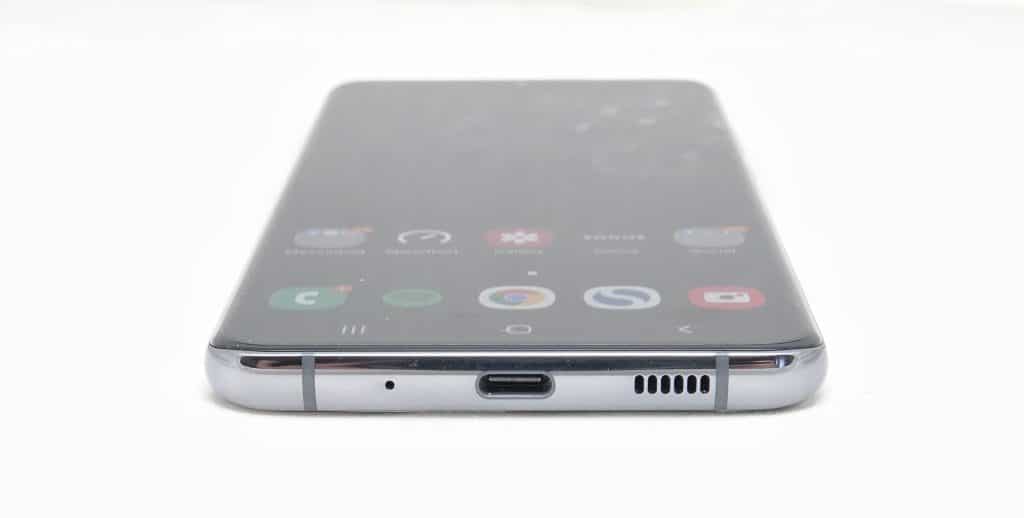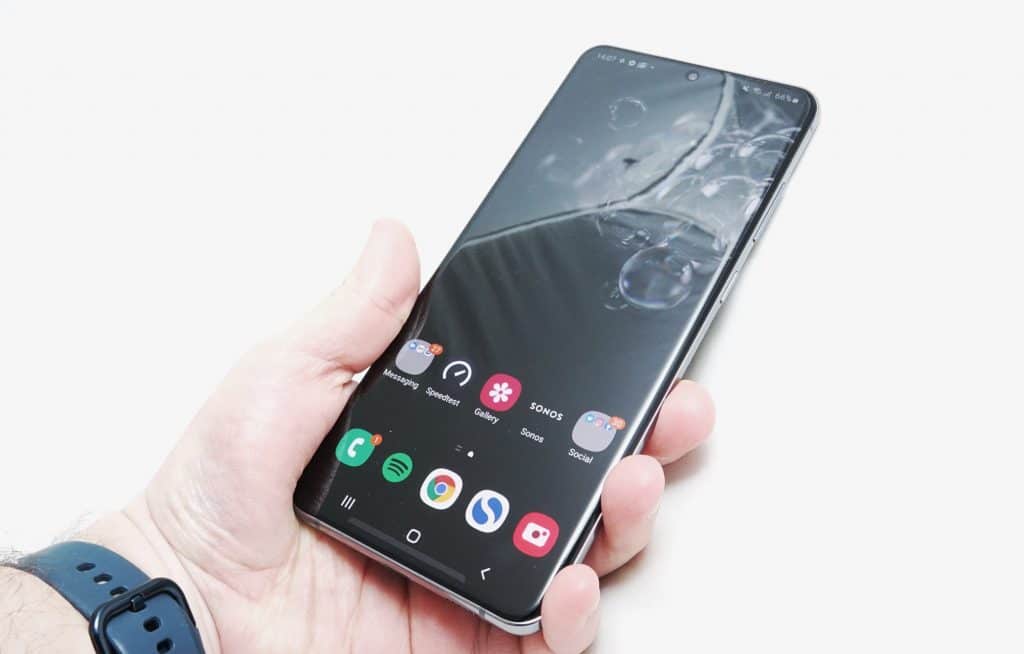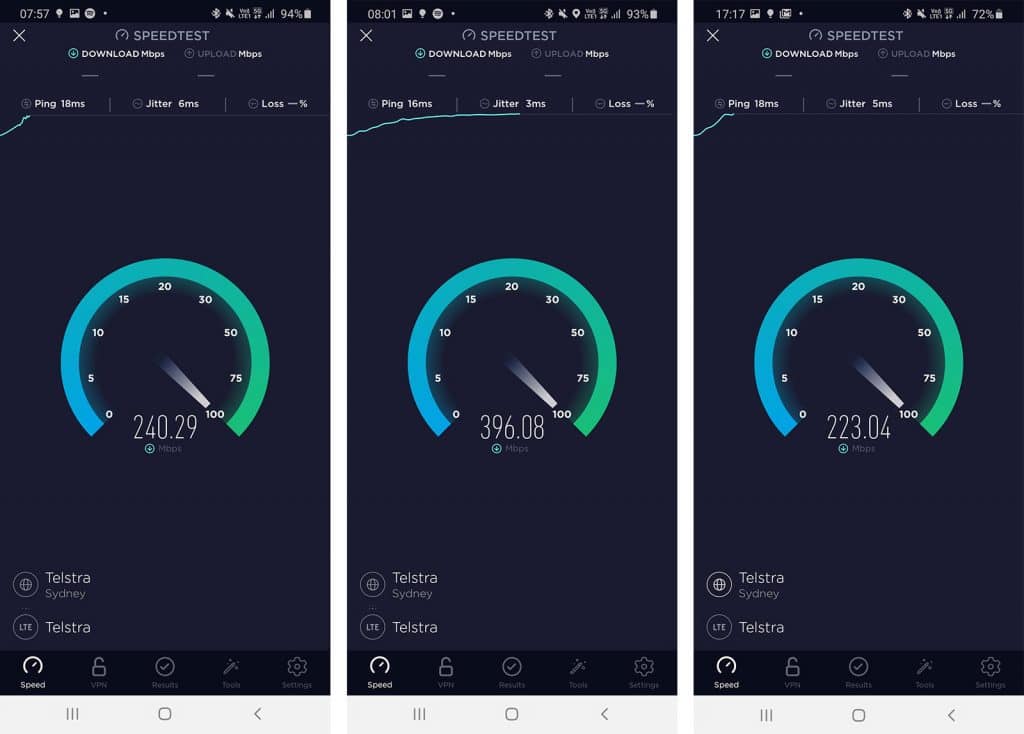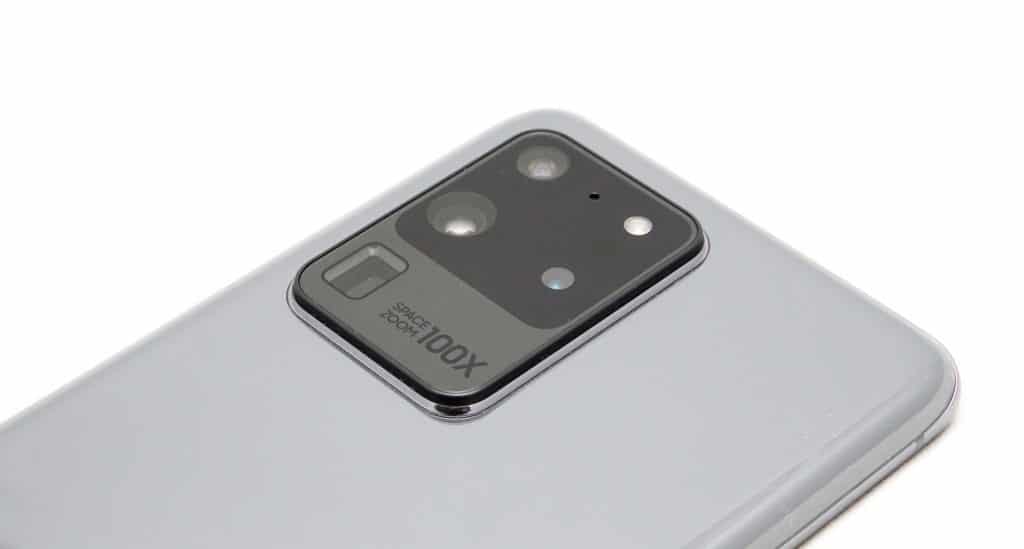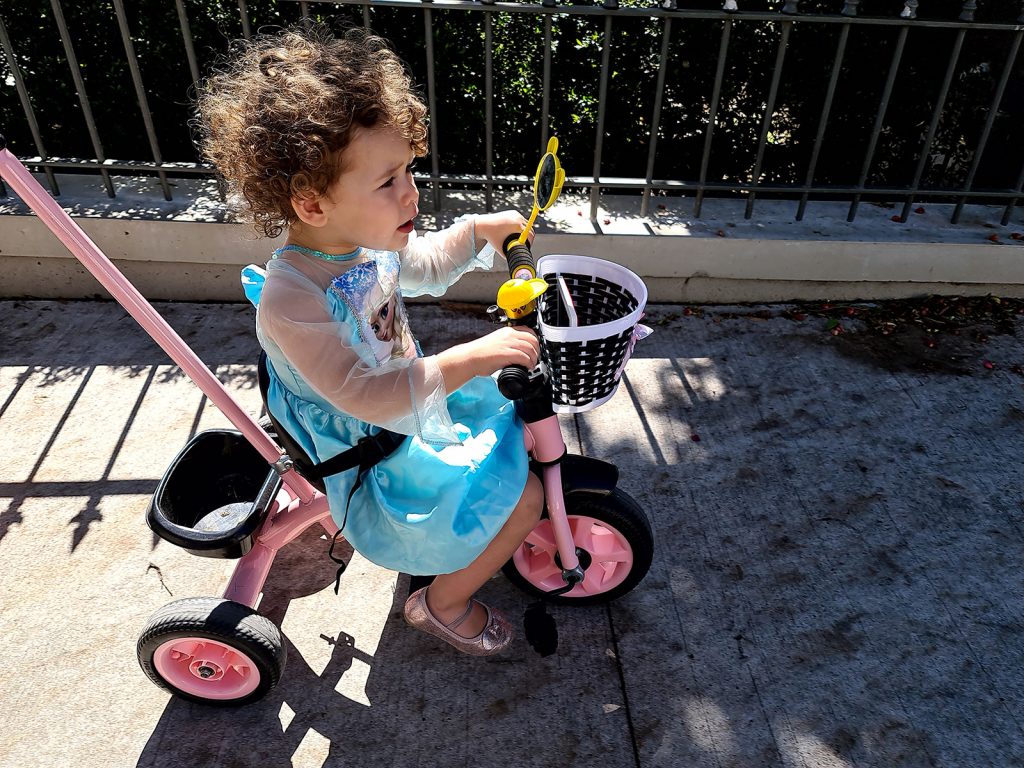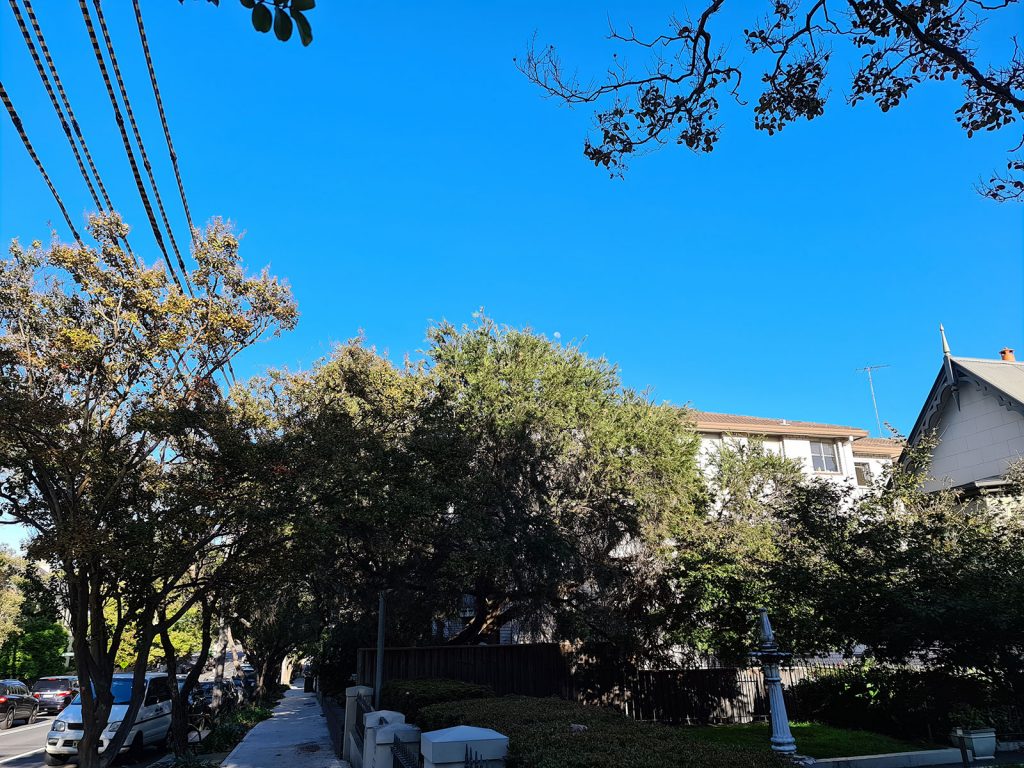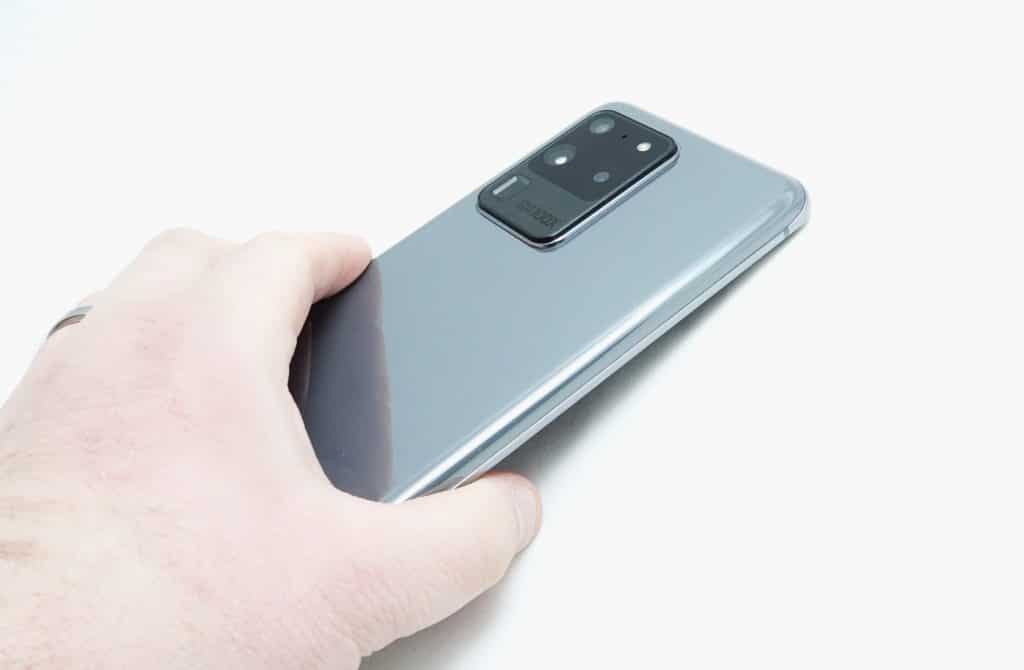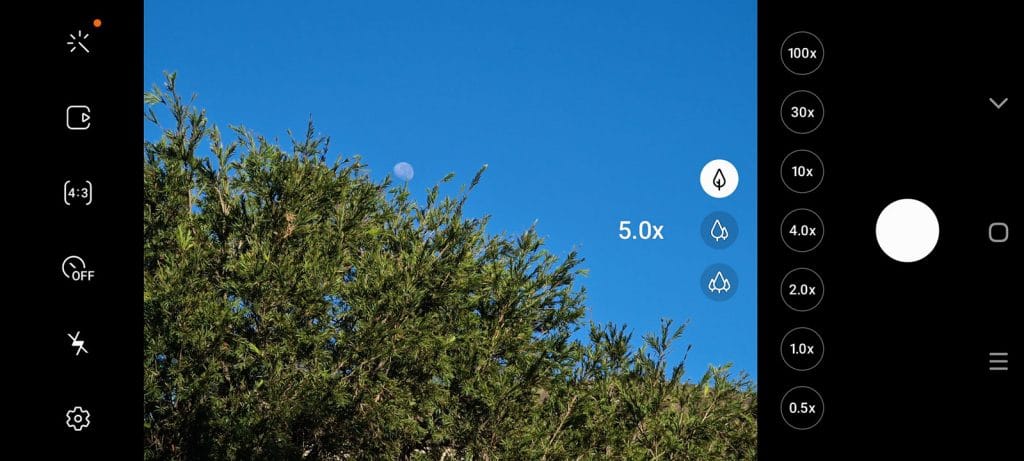Quick review
The good
The not-so-good
The Samsung Galaxy flagship for the year doesn’t just boast four cameras, it has one of the biggest screens and feature sets of any Galaxy phone prior. Is the Galaxy S20 Ultra 5G the best Galaxy thus far?
Phones are bigger than ever, and not just because we rely on them so much. They are literally bigger than ever, and take up more space in your hands, pockets, and bags.
With those big sizes come even larger feature sets, as the biggest and most expensive phones can typically attest to. Large camera designs and huge batteries typically sit underneath those massive screens, as well as the idea that your life is your phone, so you need it to be able to handle everything that you need. It needs to be great at the web, email, photos, apps, games, and pretty much anything else you can think of.
Your phone needs to be excellent, and it needs to be extraordinary. And what’s more, it needs to be fast enough for today’s growing world, and it is growing.
We may well be spending more time at home lately thanks to world events, but it won’t always be that way, and you don’t typically buy a phone with a short-term view. Big and expensive phones are for the future, and that’s how you need to look at them.
With Samsung’s latest big flagship, that view is clearly there. Offering one of the biggest feature sets we’ve ever seen in a phone, and certainly one of the biggest smartphone cameras to date, the Galaxy S20 Ultra is a phone focused on tomorrow. Is it good enough for today?
Design
Bigger than any other phone we’ve reviewed in a quite a while, the Samsung Galaxy S20 Ultra intends to make itself known. Appearances can be deceiving, it’s true, but the big S20 Ultra plans to make a dent not just in how large it is, but how its feature set puts it in charge.
At 6.9 inches, it’s easily one of the biggest phones you can find, with enough of a lead on the 6.5 inches of Apple’s biggest, and just 0.2 inches bigger than the S20+, the model that sits beneath it.
The same design language is here — the glass encased body with the metal frame — though the heft and thickness are noticeably different.
You’ll find the same rectangular cut-out for the camera, and the same small hole in the front for the self-facing camera. The buttons are all on the right edge, and much like prior Galaxy models, the glass-heavy design makes the S20 Ultra feel more like you’re wielding a curved soft piece of glass than merely a phone.
But there’s a full millimetre difference in thickness between the 7.8mm Galaxy S20+ and the 8.8mm Galaxy S20 Ultra, not to mention almost 40 grams of weight in the 186g S20+ and 220g in the S20 Ultra.
Indeed, it’s a bigger phone, and your hands and pockets will feel it.
Features
The biggest and most expensive of the entire Galaxy S20 range, Samsung’s properly flagship Galaxy S20 doesn’t just set the bar on size, it sets it on features. You name it and it’s practically here, right down to the microSD slot, which might go walkabout on phones these days.
There’s a Samsung Exynos 990 chip just like on the other Samsung Galaxy S20 phones, but just about everything has been supersized. You’ll find a staggering 12GB RAM here alongside either 128GB or 512GB storage (our Galaxy S20 Ultra had the 128GB), plus Android 10 out of the box.
Four cameras can be found in S20 Ultra, with the crazy big 108 megapixel F1.8 standard wide camera, alongside a 12 megapixel ultra-wide set to F2.2, plus a 48 megapixel telephoto at F3.5, and a DepthVision camera to handle the de-focusing in Samsung’s “LiveFocus” portrait style images. This camera setup doesn’t just support 108 megapixel shots if you want them, but a crazy 100x “Space Zoom”, which is another way of saying digital zoom to a magnification of one hundred, plus 8K Ultra HD video capture. On the front, there’s a 40 megapixel F2.2 camera, too.
That’s easily one of the biggest camera combinations of any smartphone to date, and it sits with a fairly high-end approach to connections. You’ll find Bluetooth 5, GPS, NFC, WiFi 6 (802.11a/b/g/n/ac/ax), and 5G internet, plus Type C USB. There’s no 3.5mm headset jack here, but you may not care.
This all sits beneath a 6.9 inch 120Hz Super AMOLED display sporting the Quad HD+ resolution of 3200×1400. There’s also water resistance, wireless charging, an in-screen fingerprint scanner plus facial scanning, and a 5000mAh battery. And it all sits inside of a body measuring 8.8mm thick, weighing 220 grams, and made of glass.
In other words, the Galaxy S20 Ultra is big and full-featured.
In-use
That size may affect how you use the biggest Galaxy S named for the year 2020, as it can feel very much like it’s made for large hands.
The S20+ was certainly big, but there are times we felt carrying and using the S20 Ultra that it was almost unwieldy, the extra size and weight making things a little harder to use one handed.
There’s an ultrasonic fingerprint sensor part of the design here, something Samsung has kept in its designs since last year’s S10 range popped up, and while it works, it’s still slower than we’d like, with a good second or so until the phone picks up on the friction ridges of your finger and does the maths, letting you in. We’d leave both facial security and fingerprint sensor switched on, because if the fingerprint takes too long, the face login will at least get you into using your phone in a timely way.
Beyond that, using the Galaxy S20 Ultra is just about like using every other Samsung device that exists. You’ll find Samsung’s slick “One UI” approach to Android 10 here, with nice visuals, clean design, and some of the snappiest performance we’ve seen on a smartphone to date.
Display
That performance extends to the screen, which at 6.9 inches taking up most of the entire front happens to be one of the largest smartphone displays we’ve ever seen.
However it’s also one of those lovely Samsung Super AMOLED screens that looks clear and sharp, and in 2020, now supports the 120Hz refresh rate. Granted, you can’t run the 120Hz at the highest resolution, but you may not care.
With 120Hz switched on, you not only get a best-in-class screen response, but some of the slickest animations and phone feel of any phone out there. More manufacturers have been adapting to the needs of a fast refresh rate in a screen, and while device makers such as Huawei and Realme are turning to the middle-ground of 90Hz, Samsung has left this thing at one of the fastest you can find, 120Hz. That’s perfectly ideal, though we’re now half expecting to see Samsung target a more gaming-focused 200Hz in 2021. Things to look forward to.
Fortunately, you don’t have to look far to see how this year’s phone works for regular apps and gamers alike, and that’s thanks to Samsung’s latest Exynos chip, plus an impressively large supply of memory.
Performance
Unsurprisingly, with the highest specs in the entire Galaxy S20 lineup, you can more to less expect no lag or performance flaws in the Galaxy S20 Ultra. Armed with a genuinely crazy 12GB RAM and Samsung’s latest Exynos 990, the S20 Ultra handles its own really, really well.
No matter what you’re doing, you can genuinely expect the best of the best as far as performance goes, and that extends to mobile performance, as well.
In our tests in Sydney on the Telstra network, we found both 4G and 5G speeds, the latter of which is important, because unlike the other S20 variants that can be 4G or both, the S20 Ultra is only made as supportive of both 4G and 5G. That means if you’re in a place where 5G is available, those blistering speeds are available to you.
Tested in Sydney, we didn’t quite hit the usual 750Mbps we’ve seen in previous tests on other 5G devices, but the performance wasn’t bad, either, hitting in the high 4G speeds of between 250 and 450Mbps.
This will only get better as 5G services improve, meaning the performance on the Galaxy S20 Ultra is solid to start with, and should hold its own as time progresses.
Camera
The same should be true of the camera, which arrives with one of Samsung’s most impressive camera setups to date.
While it shares similarities with the other two models in the Galaxy S20 range, the main standouts here are the 108 megapixel camera Samsung collaborated with Xiaomi on, and the 48 megapixel telephoto camera. Combined, Samsung suggests a maximum of 100x zoom is possible in a technology the company advertises on the back of the camera module itself. You can read it for yourself as “Space Zoom”, but it’s best interpreted as 100x digital zoom, with some camera processing hopefully smoothing out the middle ground.
This combination of technology helps to provide the S20 Ultra a fairly impressive camera feature set, though it’s one that doesn’t end up necessarily feeling best in class, even if it rivals others.
For instance, the images in daylight appear crisp and sharp, and the colours lovely, yielding what is a really great image downsampled back to 12 megapixels at the best of times, with even some decent close-up shots, too.
That’s a downsampling factor nine times from the 108 megapixel sensor you have, which should mean you get a higher quality image than with a 48 megapixel sensor doing the same thing four times (divide 48 megapixels by four, you get 12; divide 108 megapixels by nine, you get 12).
However, despite this approach, the imagery also comes out a little soft, with pictures lacking that clarity once you get in a little closer. In fact, they’re actually softer than we’d like, with a film-esque floral degree of softness that is at least comforting to look at, though we’d prefer it if clarity reigned supreme.
Even with the 108 megapixel camera working (below) with the full extent of those 108 megapixel images, you find the sharpness just isn’t there, particularly when you get up close. They’re pleasing enough for the eyes for uploading to social, but we’ve seen more clarity from competitors, and that’s really frustrating to see from a phone and camera system that has the specs to take on the competition.
Low-light mode can’t save it much, either, with the sensor’s native mode appearing underwhelming compared to competitors, though at least it has a night mode which stacks images quite well. Credit to Samsung where it’s due, as the interface for its camera is now quite solid, and comes across more easily in its low-light capture mode that you should wait for the animated shutter to finish its animation before you move anything.
The rear camera’s performance issues seem to be a stark comparison from the selfie camera, which delivers imagery that feels better overall, even though it, too, tries to apply a fair amount of camera softening in the first place through a level of filtration. It begs the question: do we really not want to see any detail in our faces?
Softness notwithstanding, Samsung’s Galaxy S20 Ultra still succumbs to the same problems that affected the S20+ we checked out before it. Namely it’s slow, and so if you fire a photo from either the on-screen shutter button on the volume key to avoid touching the screen, you’ll endure a wait time of between a quarter of a second to a full second. It can be rather frustrating, and is typically the difference between capturing the shot and missing it entirely.
Samsung tries to fill that gap with “Single Take”, a new thing for 2020 across the entire S20 range that doesn’t just snap one photo, but snaps many and even a video, processing and filtering them so you have a range of choices when you’re done capturing the scene. But unfortunately, Single Take doesn’t work as well as it should, and often leaves you only with videos of the moment, not the photos that it clearly should. It’s frustrating, because the concept of Single Take is fantastic, but the execution is markedly less so.
Samsung’s other big deal feature for the Galaxy S20 Ultra 5G is its “space zoom” camera, a concept that sees the company make use of the technology in the back to let you get up, close, and personal with pretty much everything, transcending the 48 megapixel telephoto and 108 megapixel standard, and moving in a little closer. By “a little closer”, we mean using a factor of up to 100x, though it’s just a form of digital zoom which means it’s blowing up pixels.
The problem with digital zoom on phones is that it’s just not very good, and that’s not a fault with phones at all, but more the idea of digital zoom. Since digital zoom is just basically cropping pixels and making them larger, you don’t really get the real photo, but rather just an over-sharpened pixelated approach to what you meant to capture.
The S20 Ultra does give you several factors to use for its crazy zoom levels, typically using it as a zoom instead of a point and shoot when you’re out and about, but the 100x advertised on the phone camera itself isn’t just silly, but an utterly useless gimmick. Not only are the images from it virtually unusable, but even if you want to hold the phone to get those camera, you’re dealing with a monumental amount of shaking and judder, making it damn well impossible to be useful.
Battery

Fortunately, the battery is much more usable, achieving up to a day and a half in our tests, though two days is possible if you plan to use the phone much, much less.
Power users on the Samsung Galaxy S20 Ultra should see a full day of life no problem, with the massive 5000mAh battery really handling its own.
Our regular use case saw a little less power hungry needs, and delivered 1.5 days without any issues, either, making it among Samsung’s best battery life right now.
You even get support for wireless charging just like the rest of the range, so you can go wired or wireless and still get that extra burst of power. Handy.

Value
However all of this comes at a cost, and it’s one of Samsung’s heftiest phones yet. Not just in size and weight, but for how much you pay.
At a starting price of $1999, the Samsung Galaxy S20 Ultra is very, very, very expensive, and we’re not sure we agree.
Technically, we can see the specs being up there and able to command such a premium, but the results don’t completely justify the value, at least not from where we sit.
What needs work?
Bizarrely, as impressive as the camera specs are, it’s one of the major areas that needs work and lowers the value from our perspective, exhibiting the aforementioned similar problem to the lower priced Galaxy S20+ just below it.
Simply put, the camera is often too slow to fire, taking anywhere between a quarter of a second to a full second to fire, and sometimes longer. By the time the camera has actually fired the shot, you may have missed it, and the same goes for Single Take, which is supposed to capture multiple shots, but may still miss out on the shot as it, too, can be quite slow.
Even when you do get the shot, you may find the clarity isn’t quite up there. Images look decent, but can be soft and blurry, and we found the quality out of the camera just didn’t match the expectations associated with such a high-priced device. To put it into perspective, competitors from last year in both the Huawei P30 Pro and Apple iPhone 11 Pro Max seem to offer better results on the whole, with clearer imagery across the board.
Then there’s that 100x “Space Zoom” camera, which is basically a gimmick. Huawei’s 50x in the P30 Pro was a gimmick then, and while it was usable, it was also something to get over quite quickly.
In the Samsung S20 Ultra, the 100x gimmick tends to render so pixelated that it begs the question if anyone would ever want to use this outside of sheer desperation. As in, are you desperate enough to render a pixelated mess just to get up close? You might, but you probably won’t be happy with the results all the same.
The use of the 108 megapixel camera is very cool, and Samsung’s performance appears a little better than what we saw in Xiaomi’s use for the Mi Note 10 last year, the first phone to get that impressively large 108mp camera. But our problem with that camera is it just doesn’t seem to perform as well as smaller camera modules on the market, and genuinely reads as Samsung playing the megapixel war all over again, with no redeeming results to really show for it.
It’s surprising, because with the S20 Ultra acting as the flagship phone of the range, beyond the specs, its camera doesn’t feel as largely impressive as it should.

Final thoughts (TLDR)
The year is off to a strange start, and mobiles haven’t quite been coming out at the pace we’ve expected. Australia has seen some brands drop out, while other phones have either decided to not turn up, and others again haven’t been as amazing as we’d like.
Sony isn’t in Australia anymore, and it’s May, and the LG flagships for 2020 still haven’t launched locally. Huawei’s P40 Pro was interesting, but hard to recommend due to how difficult it is to get apps on the device, and while Oppo’s Find X2 is coming, there’s no confirmation of when.
Flagship phones for 2020 should normally be ready and available and competitive as all hell, but in 2020, we’re preoccupied. For good reason, too: the COVID-19 coronavirus has our attention elsewhere, and manufacturers are slowing down. Since the cancellation of Mobile World Congress in February, mobile makers are delaying phones, rolling them out more gradually, not just to shelves, but to the press.
And this means 2020’s flagship devices meant to blow your eyelids off are few and far between, even by May.
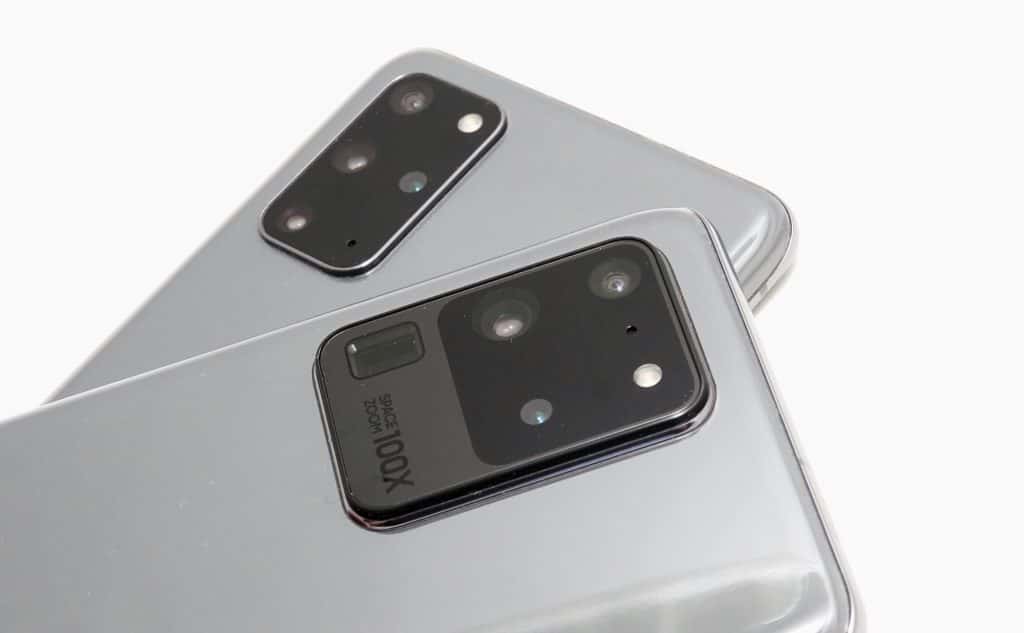
As it stands, by May 2020, the Samsung Galaxy S20 Ultra is one of only a small handful you can find from this year meant to do just that, impressing upon you the urgent need to upgrade your phone to something more amazing than what you had last year.
However as strong as a proposition as this sounds, the S20 Ultra falls a little short. The feature set is there, alongside better battery life and support for 5G, but for the price, that camera is a bit of a shortfall, and isn’t as strong as other options. The upsides here are being able to get those 108 megapixels (if that’s critical for you), and capturing 8K video, but the Galaxy S20 Ultra hardly feels like the grand slam it should be.
It’s a big full-featured flagship, that’s for sure, though it’s not one that feels as complete as you may expect. There are just about as many features on the S20 Ultra as you could possibly want, and for once in the longest time in Samsung’s S-range, battery life is beginning to feel like one of them, but if you’re expecting the best camera of the best of the best, you’re going to be left feeling a little soft, and maybe a little short changed.
It is entirely possible firmware updates could fix this, but a couple of months on from release, we’re not so sure that’s going to be the case, and up close clarity is clearly a problem for Samsung’s “ultra” camera system.
As it stands now, this big full-featured phone has a big camera system that just feels a little let down. Great phone all the way through, though that big camera needs some work. If slash when Samsung gets that work complete, it might just have the world’s best camera system for 2020. For now, it’s a big flagship that falls a little short, despite that impressive zoom range.



